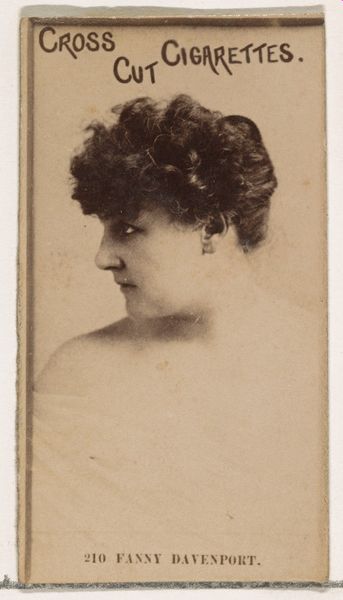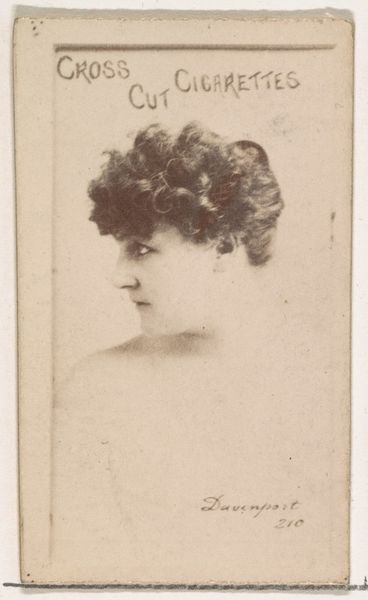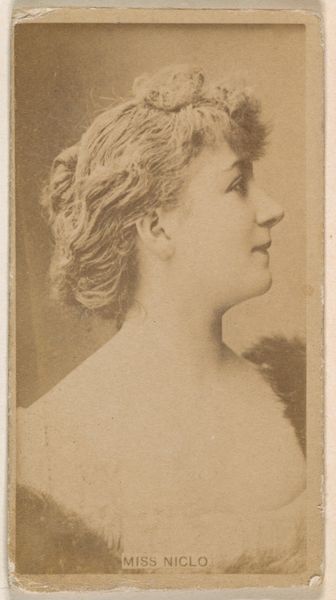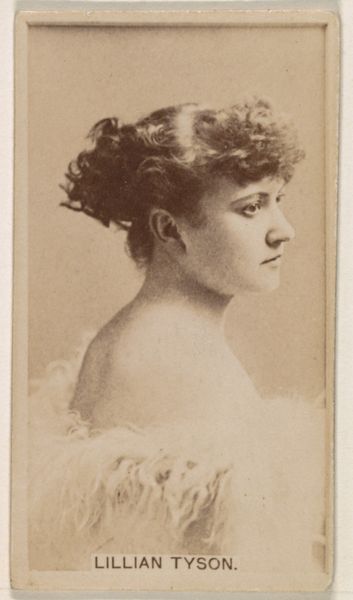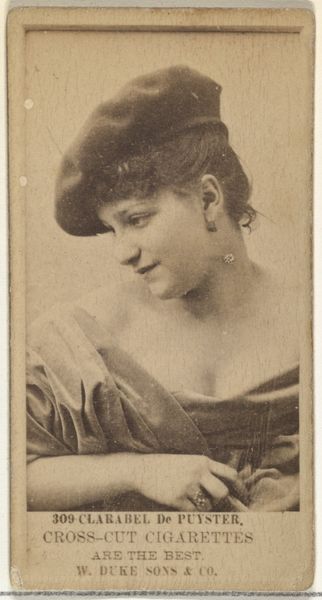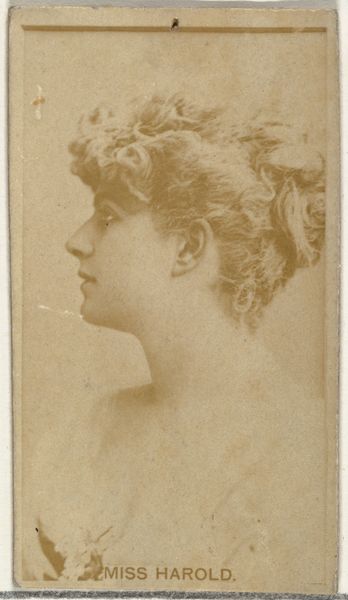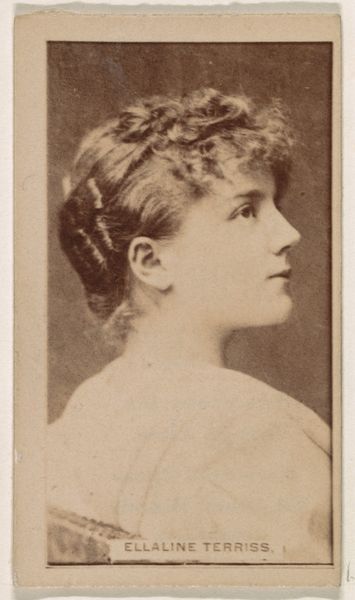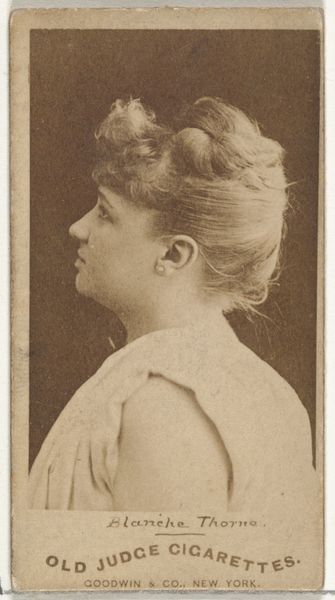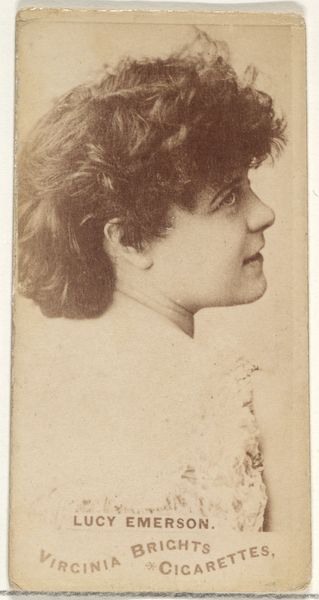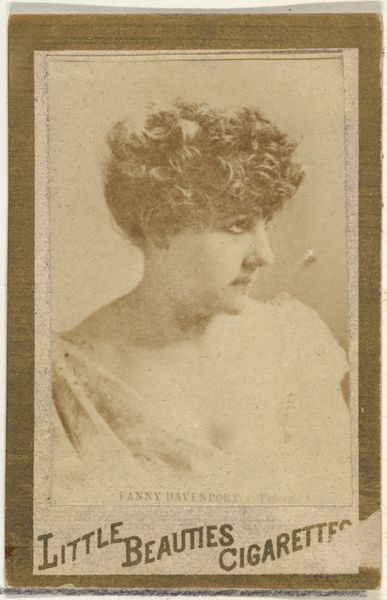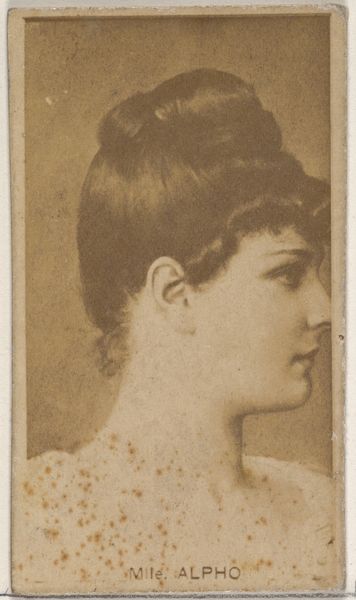
Card Number 770, Fanny Rice, from the Actors and Actresses series (N145-5) issued by Duke Sons & Co. to promote Cameo Cigarettes 1880s
0:00
0:00
Dimensions: Sheet: 2 11/16 × 1 3/8 in. (6.8 × 3.5 cm)
Copyright: Public Domain
Curator: Looking at this, I'm struck by its quietness. There's a soft focus to the image, almost dreamlike. Editor: This is "Card Number 770, Fanny Rice," a portrait from the "Actors and Actresses" series. W. Duke, Sons & Co. issued these cards in the 1880s as promotional material for Cameo Cigarettes. It's currently part of the Metropolitan Museum of Art's collection. Curator: Cigarette cards! That immediately changes the context, doesn’t it? It becomes part of this vast, often overlooked archive of advertising images shaping perceptions, not just of products but of ideals too. Who was Fanny Rice, I wonder? Editor: Exactly! While Fanny Rice was a stage actress of the era, the image serves a purpose within a developing consumer culture. Think of the politics embedded in these objects. Her carefully constructed image becomes intertwined with selling cigarettes and the associations of glamour. The gaze, the soft lighting, it all speaks to constructing an image. Curator: And we can't divorce it from ideas of femininity. This idealized representation—a woman, softly lit, side profile revealing delicate features—feeds into very specific narratives around beauty and who has the right to be seen. The lack of color further emphasizes her “purity”. It is quite exclusionary if we reflect upon racial dynamics, for instance. Editor: Precisely! These images played a huge role in the widespread dissemination of ideas, and not always benign ones. It prompts one to examine who is behind these choices, and their targeted audience, it allows us to investigate structures of power. Curator: Yes. It is unsettling that we tend to overlook tobacco companies, but their reach at the time through marketing has been underestimated, their production of popular media a vehicle for a white suprematist agenda. We need to consider how these companies contribute even to this day to inequalities. Editor: Right. The history of tobacco is inextricably intertwined with global exploitation and cultural norms. Seeing it through that lens makes us rethink everything from aesthetics to social hierarchies of that era. Curator: This reminds me again that what looks like a simple image holds a complex network of social and economic forces. Editor: Absolutely. Understanding how institutions and businesses influence art enhances awareness about underlying political implications.
Comments
No comments
Be the first to comment and join the conversation on the ultimate creative platform.
